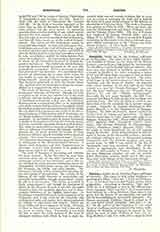

Sozusa, a titular see of Palestina Prima, suffragan of Caesarea. The town, at first called Apollonia, is mentioned by Pliny, “Hist. nat.”, V, 14, and Ptolemy, V, xv, 2, between Caesarea and Joppa, and by other geographers. According to Josephus, “Ant. jud.”, XIII, xv, 4, it belonged at first to the Phoenicians. From Appianus, “Hist. rom. Syr.”, 57, it seems to have been founded by a King Seleucus, whose name it was given, but the history of this maritime city and the date of its establishment, are entirely unknown. The Roman proconsul, Gabinius, found it ruined in 57 B.C. and had it rebuilt (Josephus, “Bel. jud.”, I, viii, 4). On the arrival of the Crusaders it was called Arsur or Azuffium, and was protected by strong walls; Godfrey de Bouillon attempted to capture it, but failed for want of ships (William of Tyre, IX, x). King Baldwin I took it in 1102, after a siege by land and sea, allowing the inhabitants to withdraw to Ascalon. Occupied in 1191 by Saladin, the town was captured by Richard Coeur de Lion after his victory at Rocbetaillee. In 1251 St. Louis reerected its ramparts, and fourteen years later, in 1265, after a siege of forty days, it was stormed by the sultan Bibars; the inhabitants were killed or sold as slaves and the town completely razed. It never recovered, and in the fourteenth century the geographer Abulfeda said it contained no inhabitants (“Tabula Syriw”, 82). Its name Apollonia was replaced by Sozusa at an early period; in 449 at the Robber Council of Ephesus Baruchius signs with this title; its bishops, Leontius in 518, and Damianus in 553, are also known (Le Quien, “Oriens christianus”, III, 595). Under the name of Sozusa it occurs in the Byzantine geographers Hierocles and George of Cyprus. In the Middle Ages it was confused with Antipatris, situated more inland, and it is under this name that some of its titular bishops are to be sought. Today its ruins may be seen at Ars tf, north of Jaffa.
S. VAILHE

